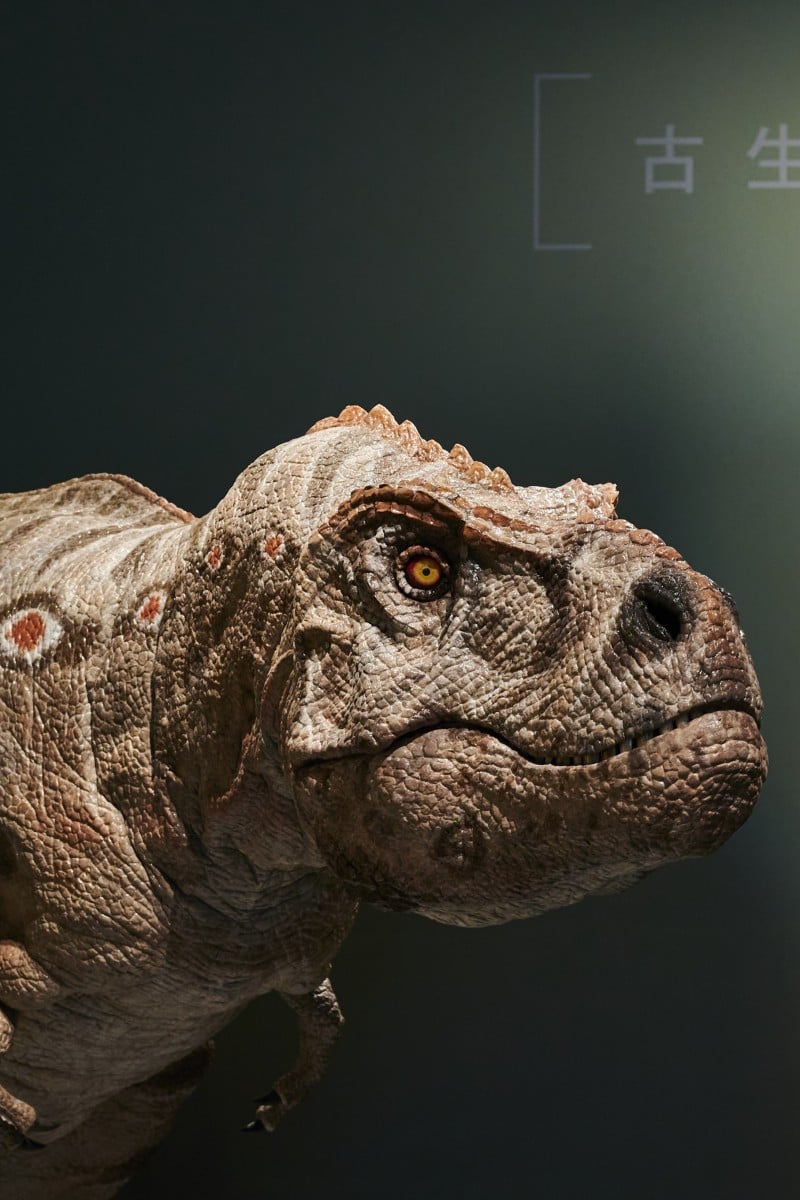
- Ferocious predator dominated the ancient landscapes of the late Cretaceous period, around 68 to 66 million years ago
- Hong Kong Science Museum’s new exhibition, ‘Extinction · Resilience’, teaches visitors about the ‘king of the tyrant lizards’
 Paul the T. rex welcomes visitors at the Hong Kong Science Museum’s exhibition, “Extinction • Resilience”. Photo: Hong Kong Science Museum
Paul the T. rex welcomes visitors at the Hong Kong Science Museum’s exhibition, “Extinction • Resilience”. Photo: Hong Kong Science Museum At any mention of dinosaurs, the first thing that pops into most heads is the mighty T. rex. Its full name is Tyrannosaurus rex, which means “king of the tyrant lizards”.
This ferocious predator dominated the ancient landscapes of the late Cretaceous period which was around 68 to 66 million years ago.
Even a juvenile T. rex could reach up to four or five metres long and weigh up to 900kg, which is about as heavy as a teenage elephant. Full-grown adults could be more than 12 metres long and weigh over 5,000kg.
New information about megalodon shark may reveal why marine predator went extinct
T. rex was a theropod – a group of carnivorous dinosaurs that were typically bipedal, meaning they used only two legs for walking.
While this dinosaur had two strong hind limbs, clues left behind by T. rex fossils suggest its forelimbs were short and small with two clawed digits. It also had a long tail to help it keep its balance.
The ferocious dinosaur’s most fearsome weapon was its movable jaw. While it could open its jaws to 63.5 degrees, 28 degrees was its optimal gape angle – the angle at which it could generate the most force.
Mammal bites dinosaur in ‘once-in-a-lifetime’ fossil find
Its teeth, which were excellent for puncturing and tearing prey, were replaced throughout its life.
Each T. rex had about 60 sharp, serrated teeth to enhance its bite force, which is the amount of force that an animal can generate with its jaws. An adult’s bite force was between 18,014 newtons and 34,522 newtons. This allowed the ancient scavenger and predator to easily make a meal of small herbivorous dinosaurs.
One less commonly known fact about T. rex is its intelligence. Its brain is more advanced than previously thought (see graphic).
Scientists figure out how smart an animal is by measuring the encephalization quotient (EQ), which is the relative size of the brain to the body. The EQ for T. rex was about 2.4. T. rex had a massive skull, and studies show that it had a large brain relative to its size. In comparison, the EQ of German shepherd dogs – which are considered one of the smartest dog breeds – is 3.1, while a human’s EQ is 7.8. This leads some scientists to assume T. rex was at least somewhat intelligent.
Tragically, T. rex, like many other dinosaurs, were wiped out in the Cretaceous mass extinction.
Learn more about this mighty predator at the Hong Kong Science Museum’s new exhibition, “Extinction · Resilience”, at the Palaeontology Gallery. It features Paul the T.rex, a lifelike robot dinosaur who teaches visitors about what it was like living during the Cretaceous period.
Young Post is pleased to partner with Hong Kong Science Museum and Hong Kong Space Museum on our STEAM Lab series. Our aim is to encourage you in your pursuit of science. Every month, the two museums will answer your burning questions about the fantastic world around us, the cosmos, and beyond.
